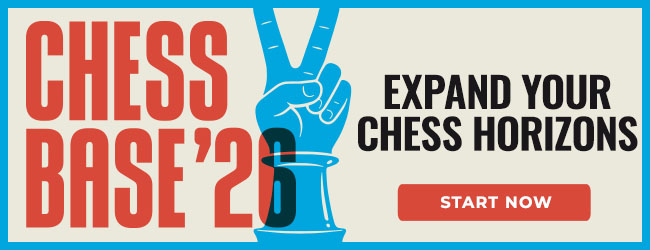Speelman's Agony #107
Editors note: Thanks to all those who have answered our Speelman's Agony survey. The survey will remain open for another two weeks, after which we'll announce the prize winner, in column #109.
This week's game are by Mark Houlsby who plays for Ulverston Chess Club in Cumbria and often frequents my Twitch stream as Tchitcherine.
When I solicited the stream for games for here, Mark kindly obliged with three games.
 The first, which is indeed Agonising is characterised by Mark thus: “White's play was excruciatingly insipid, and was duly punished.”
The first, which is indeed Agonising is characterised by Mark thus: “White's play was excruciatingly insipid, and was duly punished.”
The second is a hard fought battle which ended in a draw, and he writes:
I was reasonably happy with the timing of kingside pawn breaks in this game. They helped to secure a draw against a more highly graded player.
The third is a nice attacking game in which he explains:
Not long ago I should think that the effect which my Queen's being en prise might have produced would have provided sufficient provocation to persuade me to exchange it, however, one thing that I learned from Igor Nataf, who used to teach me, remotely, on ICC, before he became a full-time mentor to Radjabov, is that if a piece is on the board, it's playing for you (in other words, in many circumstances the initiative overrides other considerations). So, not minding that my Queen was en prise, I ran with the initiative and conducted an attack.
All notes are mine apart from an aside quoting American GM Ben Finegold, at the end of the third.
Click or tap any game in the list to switch
On this DVD GM Nick Pert shows you typical mistakes by 1800-200 players. Themes as when to exchange pieces, how to convert an advantage, passive pieces, anticipating your opponents plan, openings and pawn structure are shown throughout the DVD.
Submit your games and win free Premium!
 At the airport, in the hotel or at home on your couch: with the new ChessBase you always have access to the whole ChessBase world: the new ChessBase video library, tactics server, opening training App, the live database with eight million games, Let’s Check and web access to playchess.com
At the airport, in the hotel or at home on your couch: with the new ChessBase you always have access to the whole ChessBase world: the new ChessBase video library, tactics server, opening training App, the live database with eight million games, Let’s Check and web access to playchess.comDid you enjoy the column and instructive analysis by GM Jonathan Speelman? Do you wish you could have a world-renowned grandmaster analysing your play? You can!
To submit your games just upload a PGN or ChessBase file (.pgn or .cbv archive), along with your name and e-mail address. Send one success story (Ecstasy) and one loss (Agony).
Tell why you chose them, where or when they were played. Please do include your email address, so Jon can reply, and preferably a photo of yourself for our article.
If your game is selected Jon will contact you personally, and not only will you get free detailed commentary of your games by one of chess’s great authors and instructors, and former world no. 4 player, but you also win a free three-month ChessBase Premium Account!
A three-month Premium subscription to ChessBase Account means you get:
- Premium access to the Playchess server with ratings, simuls, lectures, and live commentary of top games
- Access to all Web apps with no restrictions, such as the Cloud database, and more!
- Full access to the Video archive, which not only includes all the past lectures by Daniel King, Simon Williams and others, but also many full ChessBase products you would normally need to buy in the ChessBase Shop but that you can view for free as a Premium subscriber.
See also:
.jpeg)

















 The first, which is indeed Agonising is characterised by Mark thus: “White's play was excruciatingly insipid, and was duly punished.”
The first, which is indeed Agonising is characterised by Mark thus: “White's play was excruciatingly insipid, and was duly punished.”




